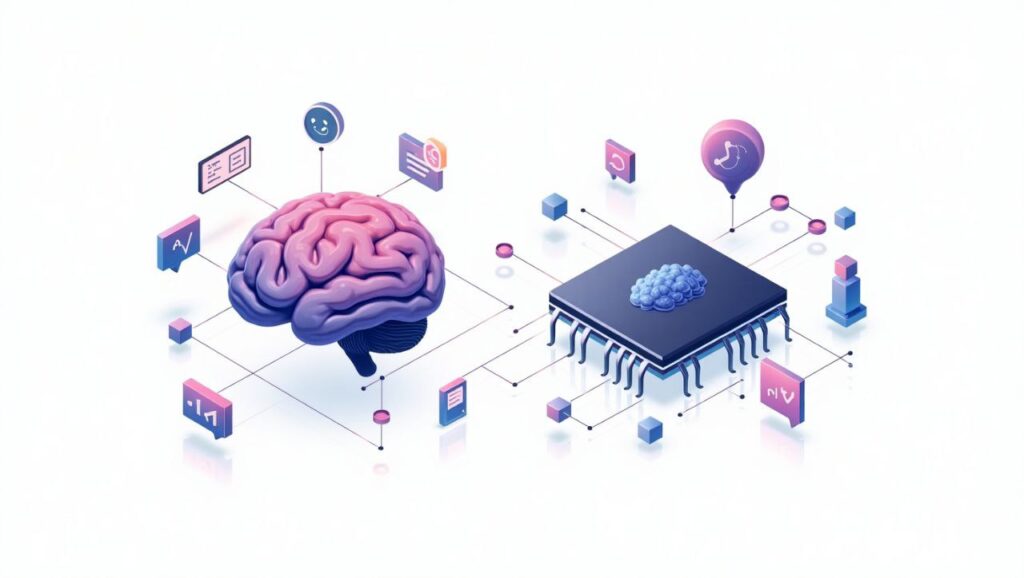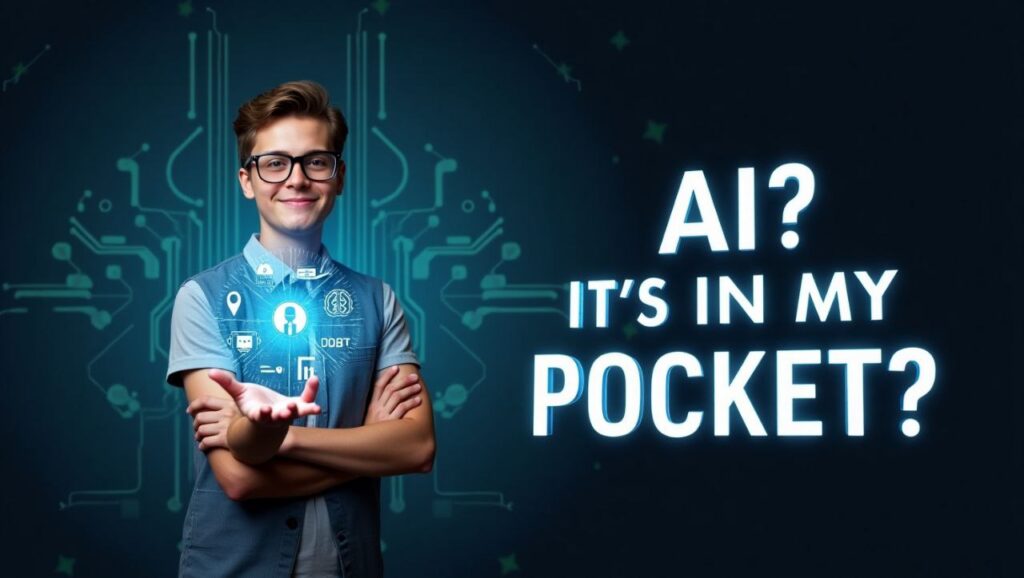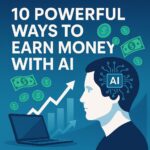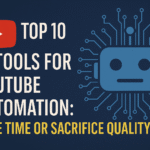AI Tools in daily life are transforming the way live, from the moment we wake up to when we go to sleep.
Alright, be honest. When you hear “Artificial Intelligence(AII tool in daily life),” do you imagine robots with red eyes plotting world domination? Yeah… you’re not alone. But let’s tone it down a bit.
AI isn’t just some futuristic, sci-fi dream. It’s already in your daily routine, quietly doing its thing—whether you’re getting show suggestions on Netflix or asking Siri to call Mom.
You use AI all the time. You just never stopped to call it that.

Table of Contents
ToggleSo, What Actually Is AI ?
In the simplest terms AI is when computers or machines do stuff that usually needs a human brain—like solving problems, understanding language, recognizing faces, and making decisions.
It’s not magic. And no, it doesn’t mean machines suddenly “have feelings.” It’s more like… they’re super fast learners that don’t sleep and don’t forget stuff.
Imagine showing a kid hundreds of photos of cats and dogs. You don’t explain much—you just let them look. Eventually, they figure out what’s what. AI works kinda like that. It learns from examples. Loads of them.
How Do Machines Even Learn?
Okay, this is where “machine learning” comes in. It’s just a fancy term for how machines get better at stuff the more they do it (like humans, but with less complaining).
Let’s say you want your inbox to catch spam. You don’t sit and write a rule for every sketchy email. Instead, you show the system thousands of emails—some spam, some legit. Over time, it starts to get it. It picks up on the weird patterns that make spam, well, spammy.
There are a few types of this learning stuff:
Supervised learning: You feed it labeled data. Like saying “this one’s spam,” “this one isn’t.”
Unsupervised learning: The machine finds patterns on its own. Like a detective with no clues—just vibes.
Reinforcement learning: You reward the machine when it does something right. Think: training a dog with treats, but make it digital.
Not All AI Is Made Equal
Here’s the thing—AI isn’t one big, scary brain. There are different levels:

1. Narrow AI (aka Weak AI)
This is what we use every day. Your Instagram feed? Alexa playing your favorite jam? That’s Narrow AI. It’s smart, but only in one specific thing. These AI tools in daily life make tasks simpler
2. General AI
This is the dream (or nightmare?) version. The kind that can think like a human across anything. It can write poetry, do taxes, and maybe even beat you at Mario Kart. But don’t worry—it doesn’t exist yet.
3. Super intelligent AI
This one Way beyond human intelligence. Smarter than Einstein, Shakespeare, and your mom combined. Still just a concept for now—but if it ever becomes real… we’ve got a lot to think about. Daily life is now heavily influenced by AI tools.
You’re Already Using AI Tools in Daily Life (A Lot):
You might not realize it, but AI’s lowkey been part of your life for years. Examples? Oh, tons:
Voice assistants: Siri, Alexa, Google Assistant—they’re all powered by AI.
Streaming apps: Netflix, YouTube, Spotify—they know your taste scary well.
Self-driving cars: Not in every driveway, but yep, AI helps them see, decide, and drive.
Healthcare tech: AI can now help spot diseases in scans faster than some doctors.
Chatbots: That “live chat” window? Probably not a person—it’s a bot with solid people skills.
Businesses? They’re Obsessed with AI
Behind the scenes, companies are using AI like crazy to speed things up and save money:
Automating boring stuff: AI can do the grunt work—like handling basic emails or organizing data.
Making smarter decisions: AI helps crunch numbers and predict what customers want.
Catching fraud: Banks use AI to flag weird transactions in real time.
Targeted ads: Ever felt like your phone’s reading your mind? That’s AI analyzing your every click.
But Hold Up—Let’s Talk About the Risks
AI’s cool, but not perfect. Like anything powerful, it comes with baggage.
Job loss worries: AI could replace repetitive jobs, sure. But it’ll also create new ones. It’s less “machines stealing jobs” and more “the job market shifting.”
Privacy drama: AI feeds on data. A lot of it. And most of that data? Ours. If we’re not careful, companies could know more than our own families do.
Bias in the system: If AI is trained on biased data, it can make unfair decisions. Like hiring systems that “prefer” certain resumes. That’s why fairness and transparency in AI matter.
Where’s AI Headed?
Honestlythe sky’s the limit. Think smarter healthcare, eco-friendly cities, better education, maybe even AI helping us battle climate change.
But with great power (you know the rest…), comes great responsibility. We’ve got to make sure AI helps everyone—not just the rich or tech-savvy.
Final Thoughts: Why You Should Care About AI
Artificial Intelligence isn’t just for scientists or techies. It’s already shaping how we live, shop, work, learn—even how we love (looking at you, dating apps 👀).
The more we understand it, the more power we have to use it right.
So, next time your phone finishes your sentence or recommends the perfect binge-worthy show, just nod and think: “Nice one, AI.”

Hi, I’m Santu Kanwasi, a passionate blogger with over 2 years of experience in content writing and blogging. I create original, informative, and engaging articles on a wide range of topics including news, trending updates, and more. Writing is not just my profession—it’s my passion. I personally research and write every article to ensure authenticity and value for my readers.
Whether you’re looking for fresh perspectives or reliable updates, my blog is your go-to source!
Related Posts
-
Sora AI: Revolutionizing the Future of Artificial Intelligence
Front interface of the official Sora.ai website showing its modern layout and branding. Have you…
-
AI Essay Writer vs Elicit AI Tool vs Reworder: Best AI Tools in 2025?
Are you ready to unlock the full power of AI in your writing? Whether you're…
-
Sora AI: Can an AI Really Make Hollywood-Quality Films?
How Sora AI is revolutionizing film production with text-to-video technology Imagine this: You wake up…
-
10 Powerful Ways to Earn Money with AI
AI is no longer just a futuristic concept—it's now a solid income opportunity. Here's a…
-
Top 10 AI Tools for YouTube Automation: Save Time or Sacrifice Quality?
Can AI Tools Make Your YouTube Channel an Overnight Success? If you're a YouTube creator…





